Athens’ tourism revolves around its ancient past, and I spent my first week in the city visiting amazing historic sites. However there was something else I was also keen to see; a lesser known attraction preserving some more recent historic artefacts.
Engineer and real estate magnate Theodore Charagionis had been a car nut since he was a kid, and not being short of a few drachmas, started collecting automobiles. Before too long his stable got so big it could no longer be considered a weekend hobby, and he decided to share his cars with the public by opening The Hellenic Motor Museum. I love old cars, so spent a rainy Athens day touring Theo’s collection.
After entering the museum you come across this striking Diatto Tipo 4DA Sports. The Diatto company started way back in 1835 in Italy, and was established to build ‘carriages for wealthy customers’ (presumably they built fuck all for poor customers). Although the straight exhaust on the Tipo would have improved engine performance, absent-minded passengers must have copped some nasty burns whilst alighting.
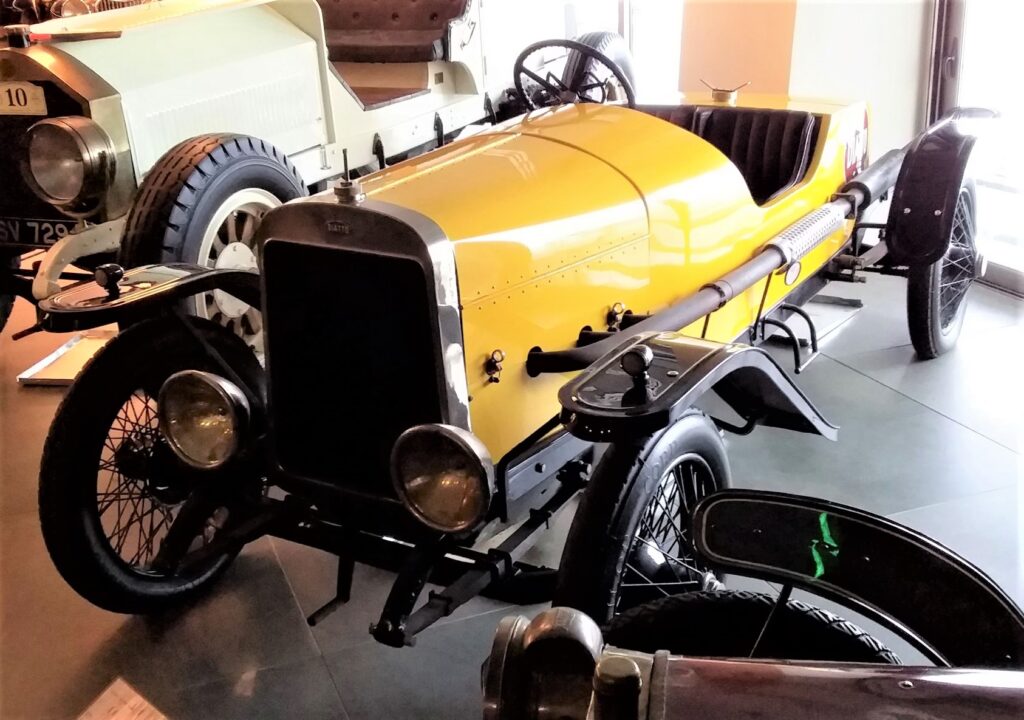
Next to the Diatto is the titanic 1918 American La France. This straight six, 14.5 litre motorcar is an absolute beast. Need to take a bunch of your mates to town? The La France’s double decker bench seats say you can.
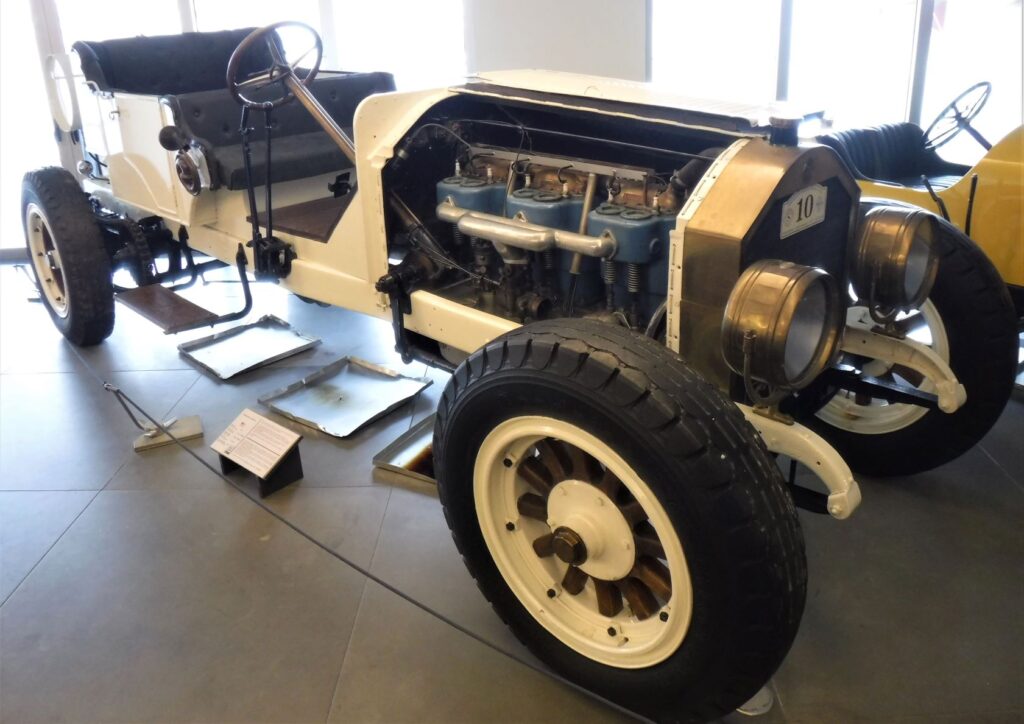
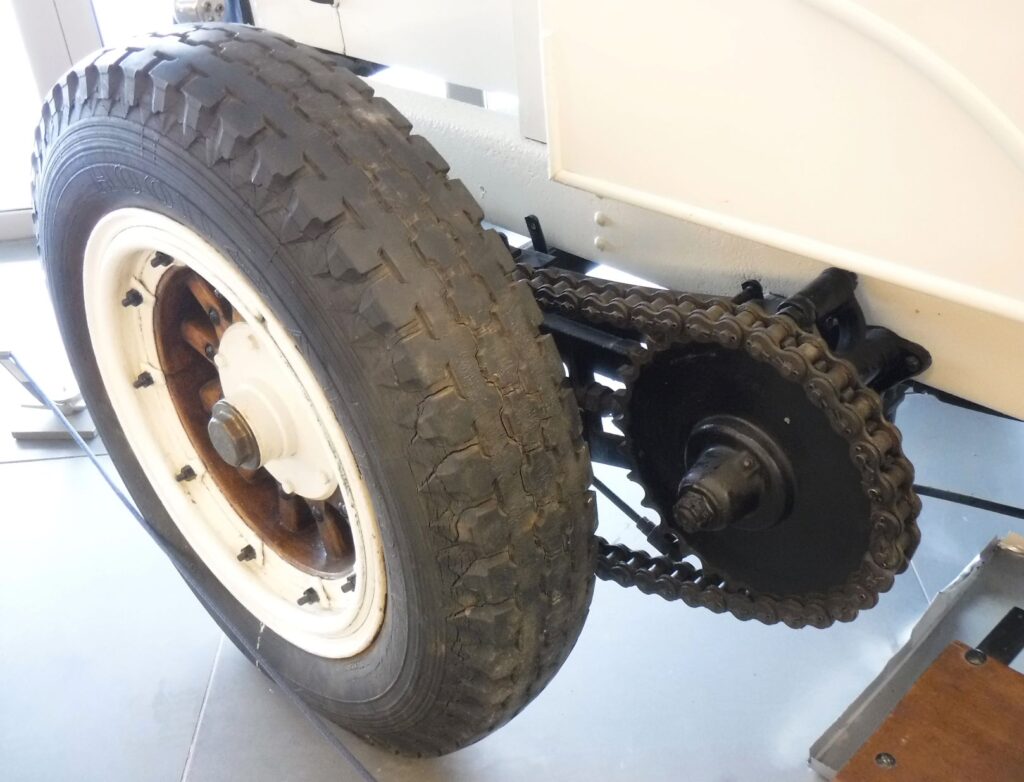
Hard to imagine this chain drive system getting past the safety tests nowadays.
You could always pick an American La France-owning family by their missing toes
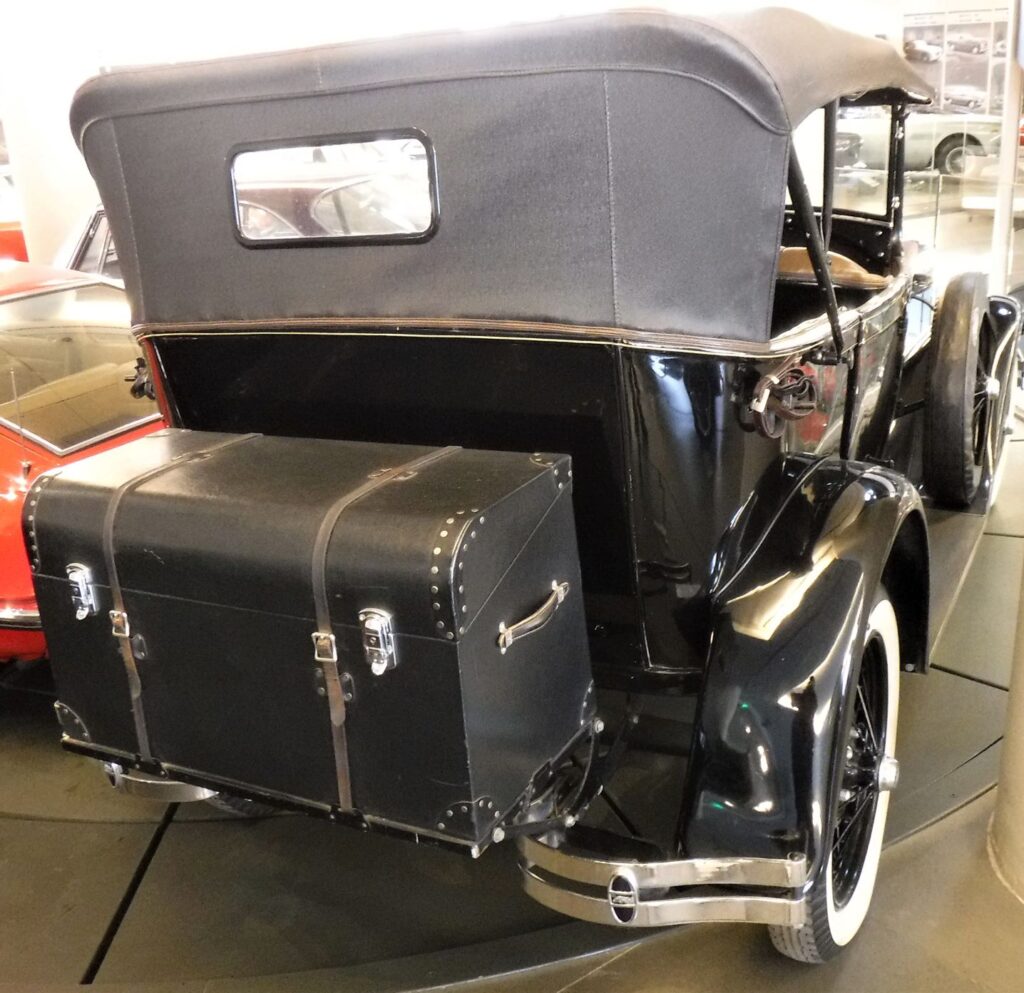
I never understood why the Americans call the boot of a car the ‘trunk’. When I saw this 1928 A-Model Ford at the Museum, it all became clear.
‘Clitus are you hiding in the dang trunk again?’
French brothers Gabriel and Charles Voisin scored a couple of firsts in the history of aviation. Firstly, they designed and built the first aircraft that could take off under its own steam (figuratively speaking of course, as a steam-powered aircraft would be impractical) and be flown with some semblance of control. And firstly, they operated the world’s first mass-production aircraft factory.
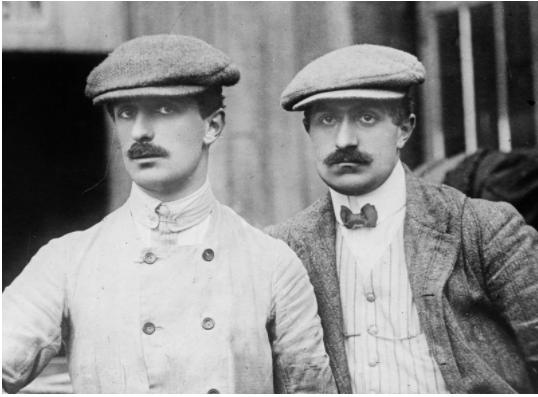
After World War I, Gabriel switched to producing automobiles under the name ‘Avions Voisin’, despite the fact they were cars, not planes.
Would you buy a car from these blokes?
The Hellenic Motor Museum has a 1926 Avions Voisin C4 Roadster on display.
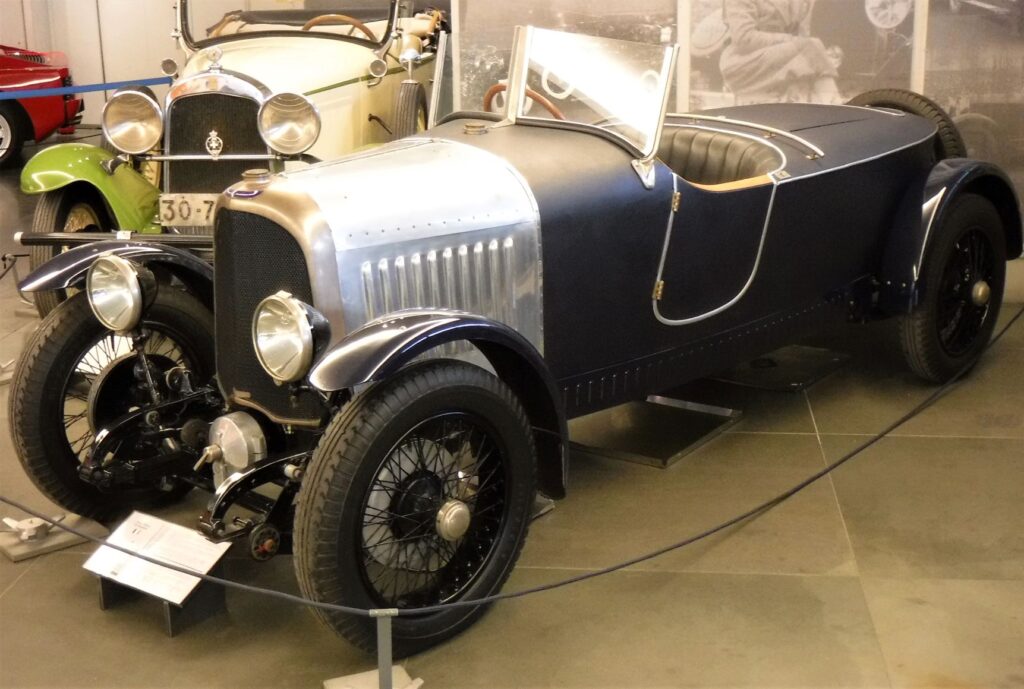
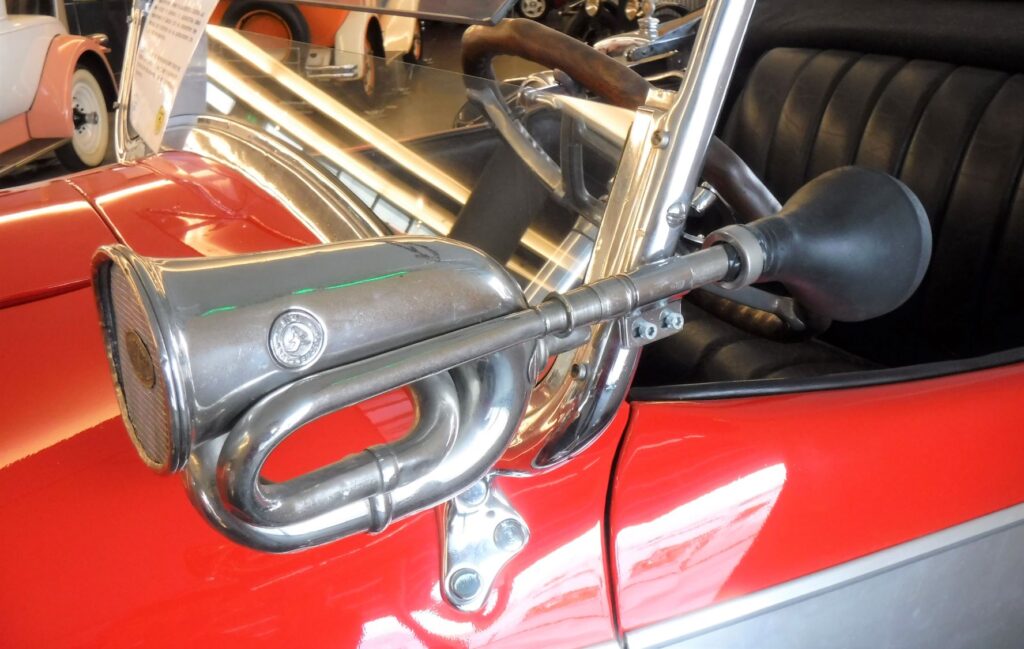
Motor museums are usually full of signs telling visitors not to touch the exhibits, and rightly so. But I tell you what, when I saw this horn on the Theo’s 1927 Lincoln L151 Roadster, it took all my self-control not to squeeze that baby.
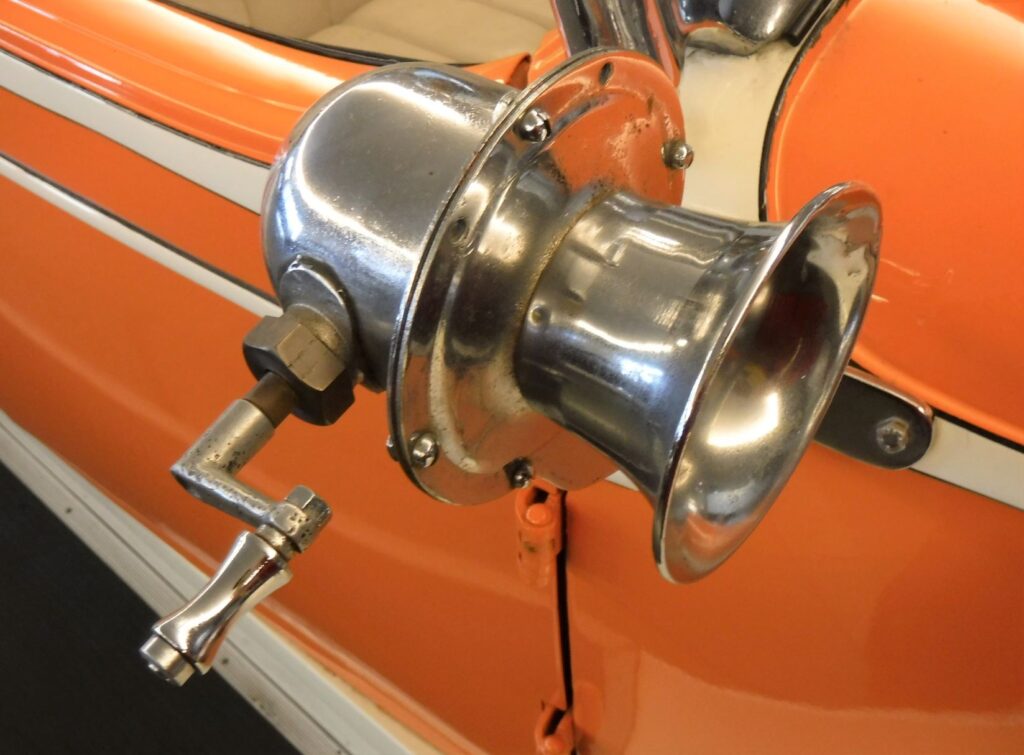
And when I spotted this wind up horn on the 1926 Nash Open Tourer I was nearly beside myself with temptation.
Considering you would have to reach out of the window, grab the handle, and wind it with sufficient vigour to get a decent volume, the Nash’s horn wouldn’t be ideal for those sudden, split-second motoring incidents.
The Hellenic Motor Museum collection includes these two spectacular Bugattis. That’s your 1930 Type 44 on the left, and a 1934 Type 57 on the right.
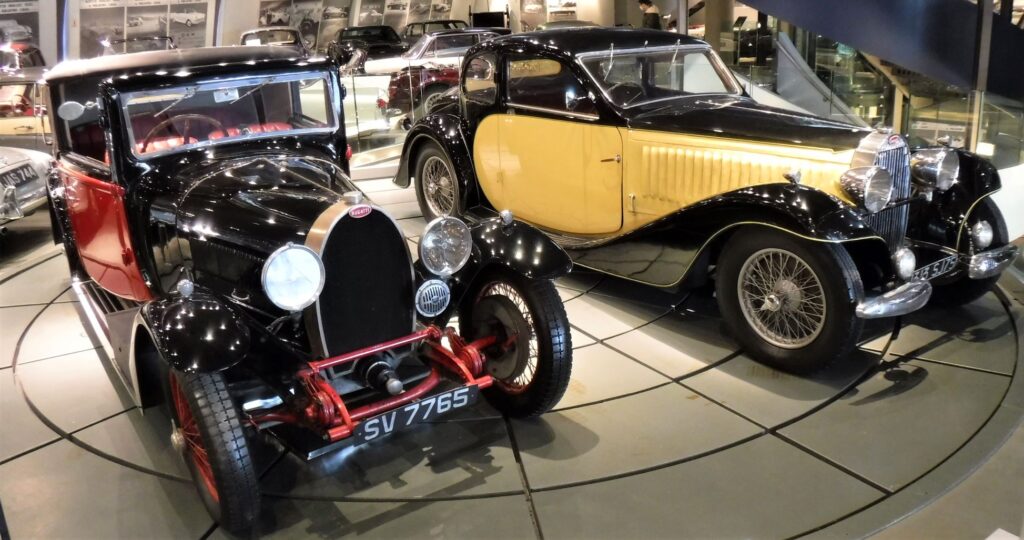
The Museum also has a number of photographs on display, including some from the wild old days of motor racing. Soft caps and flying goggles were de rigueur, and having a fuel tank full of high octane petrol in the small of your back considered an acceptable risk. This Bugatti seems to be having an each-way bet on the weather, with treaded tyres on the back and slicks on the front.
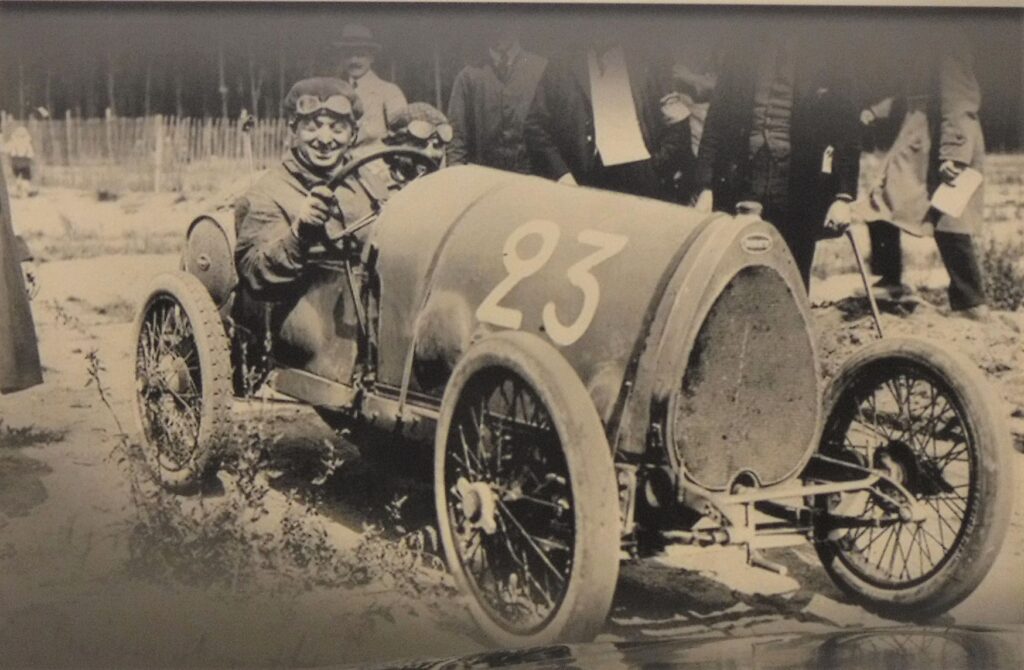

I can’t figure out if this is a car trying in vain to overtake a Bugatti, or it’s the Bugatti that you can’t overtake. Either way, it’s not much of an advertisement for a fun Sunday outing, with the driver barely maintaining control and his girlfriend shitting herself.
Our Dad used to have a mid-1920s Delage DIC when he was a young bloke. A Melbourne boy but living in Geelong, legend has it that Dad used to barrel down the Geelong Road in his Delage whilst sporting a French beret. So I was pretty excited to find a Delage at the Hellenic Motor Museum.
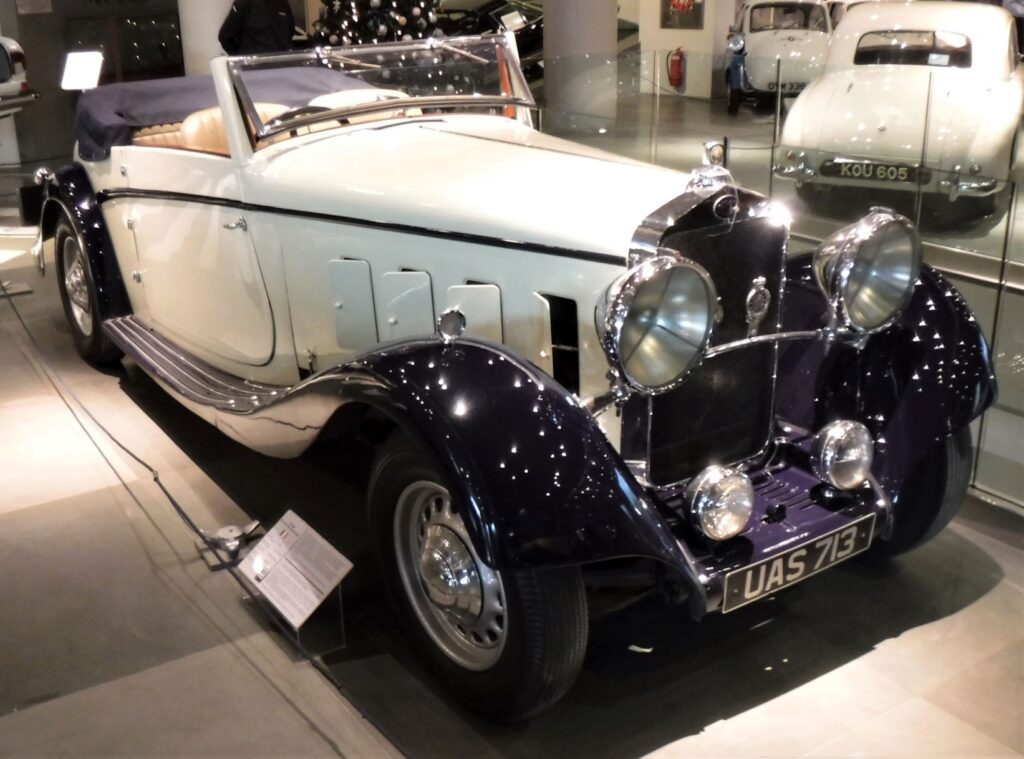
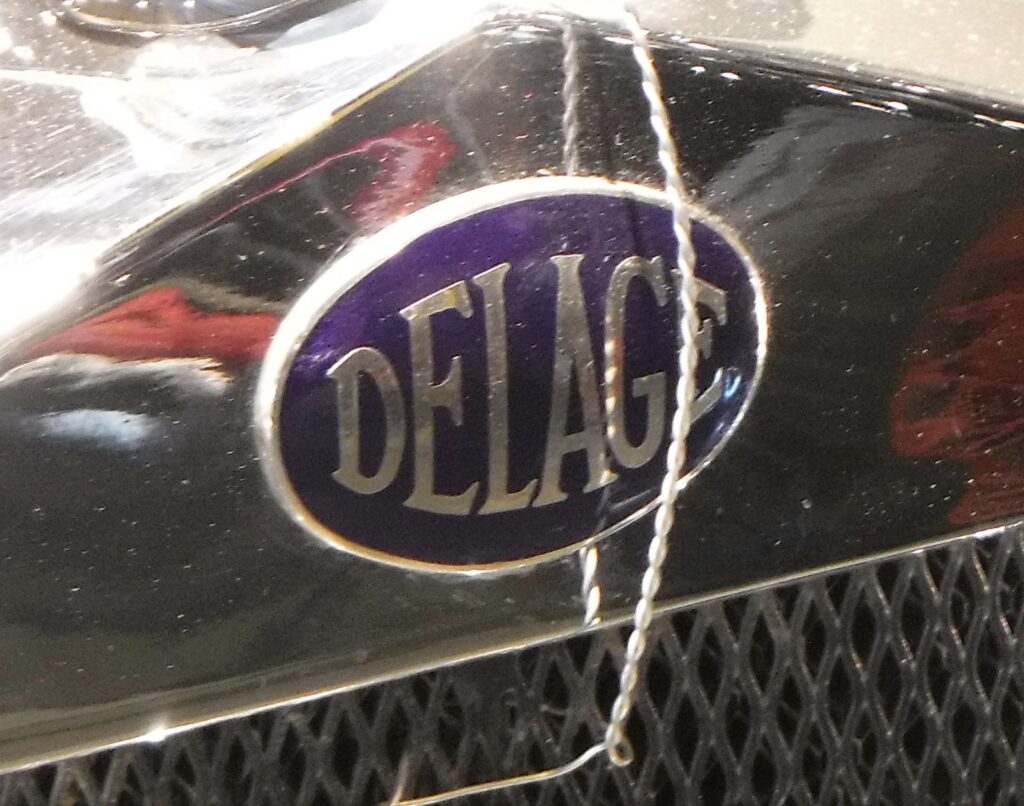
Theo’s Delage is not a DIC, but rather a 1934 D8, but it was still very cool to see the Delage badge on the radiator.
Nowadays, new car buyers can be won over with push-button start, sat-nav and a cup holder. In the old days, discerning buyers were demanding a nice set of blinds and a flower vase, like those available with the 1924 Hudson Super Six.

‘Dickey’ seats – extra seats fitted behind the car’s cabin – are a feature of many historic cars. They are also know as ‘mother-in-law’s seats’, and to save the breeze ruining mum’s hairdo, the Triumph 2000 sported a dinky dickey seat windshield.
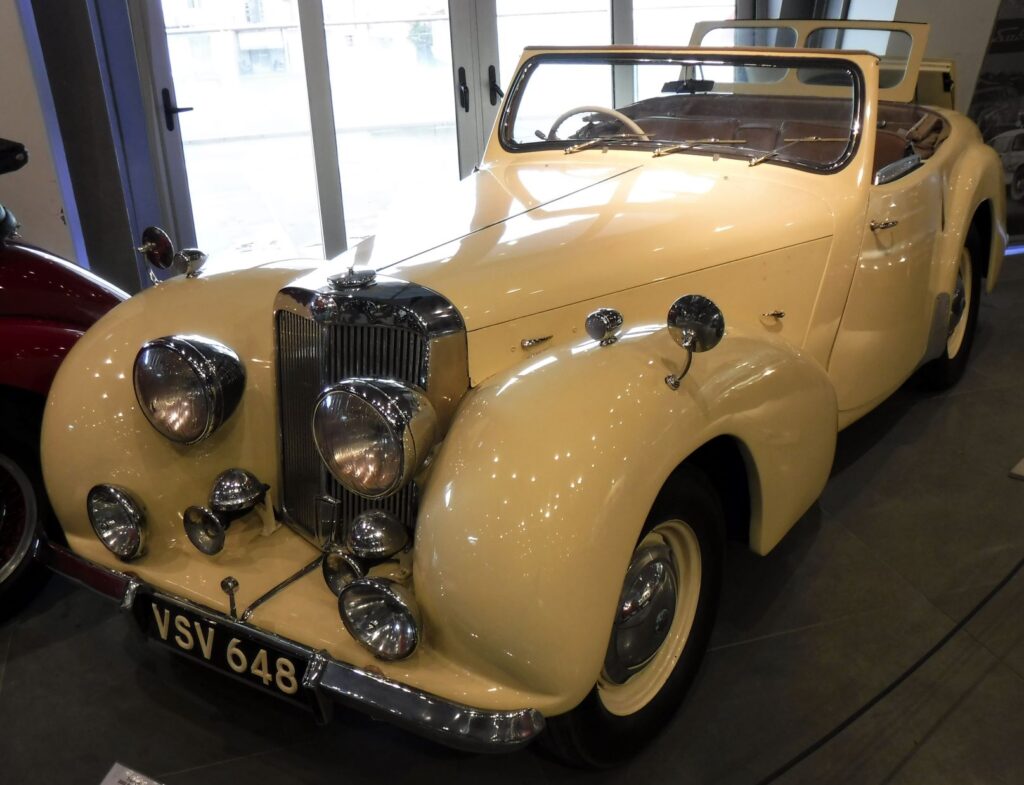
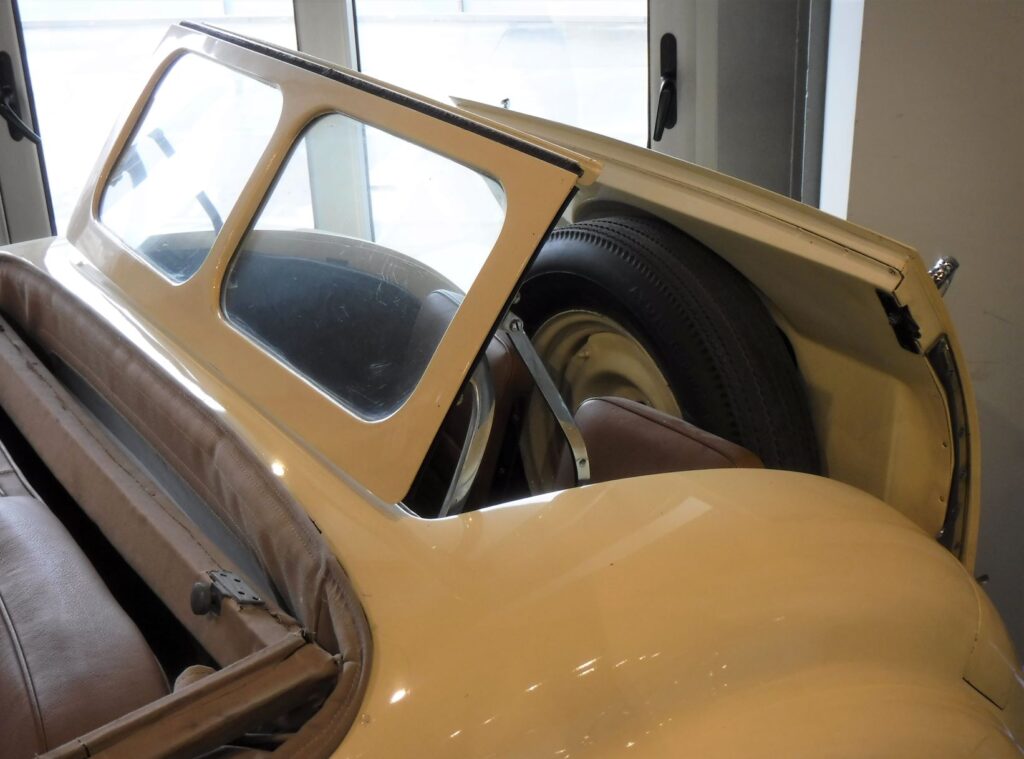
Mum would have had a bastard of a time climbing in and out of the Triumph’s dickey seat, and probably laddered many perfectly good pairs of stockings
The Hellenic Motor Museum’s collection also includes some American iron. The ’57 Lincoln Premier was a flash affair (below left), sporting power seat adjustment and power windows. Next door is the 1959 Chrysler Imperial Crown, purchased by the Museum from Robert Plant. You know, Robert Plant. Robert Plant? Lead singer of Led Zeppelin. You know, Led Zeppelin? Oh forget it. Maybe Katy Perry has an Imperial Crown too.
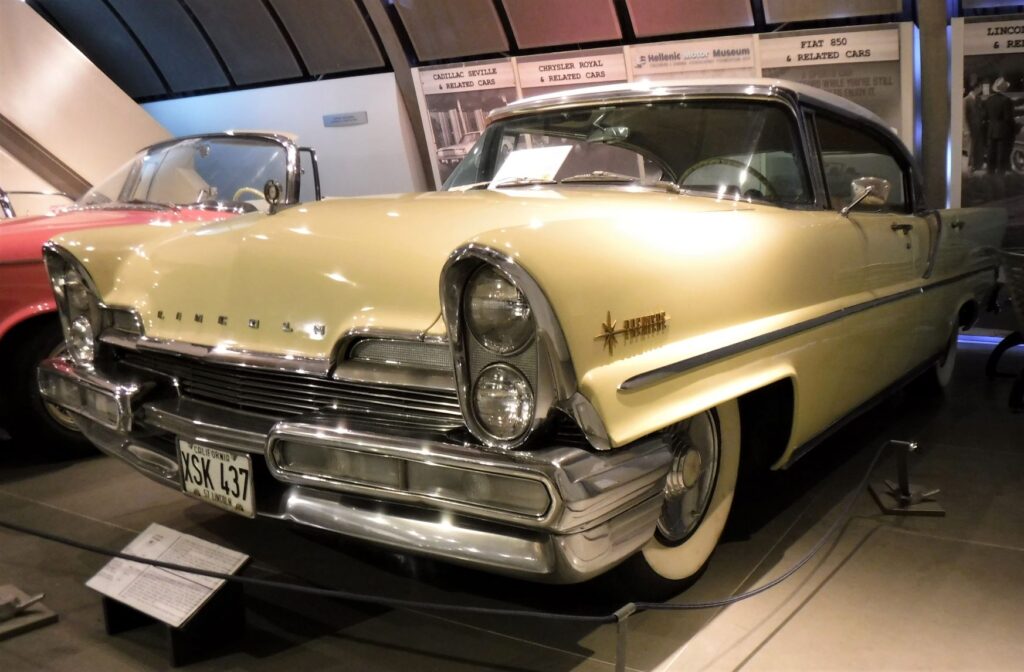
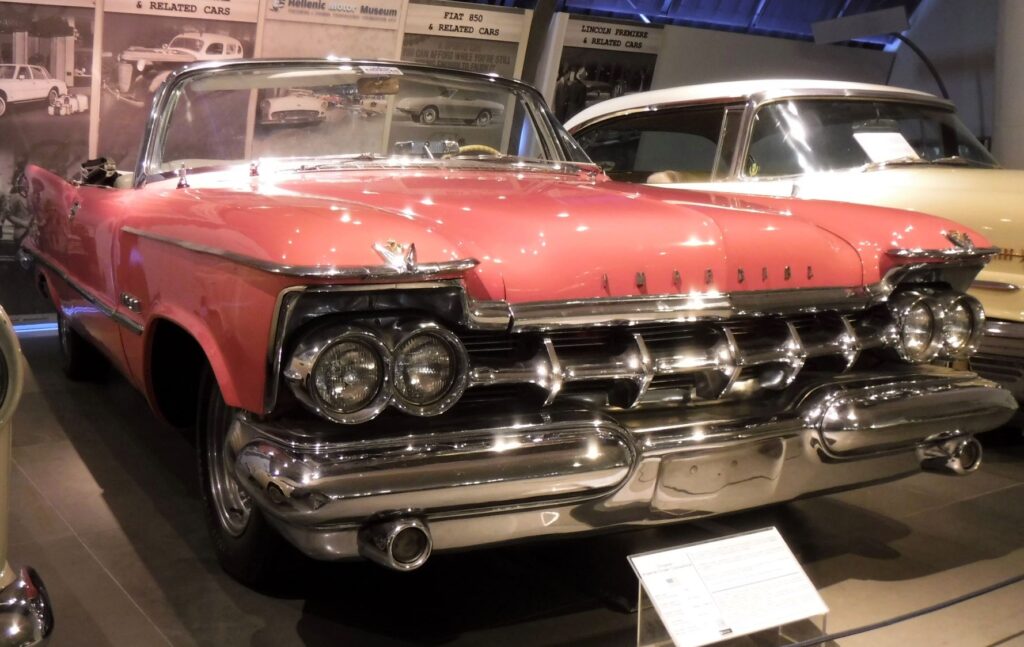
Don’t think this styling has ever been described as ‘understated’
Despite being over 4.5 metres long, the 1952 Daimler DB18 Special Sports coupe only managed to find space for two passengers.
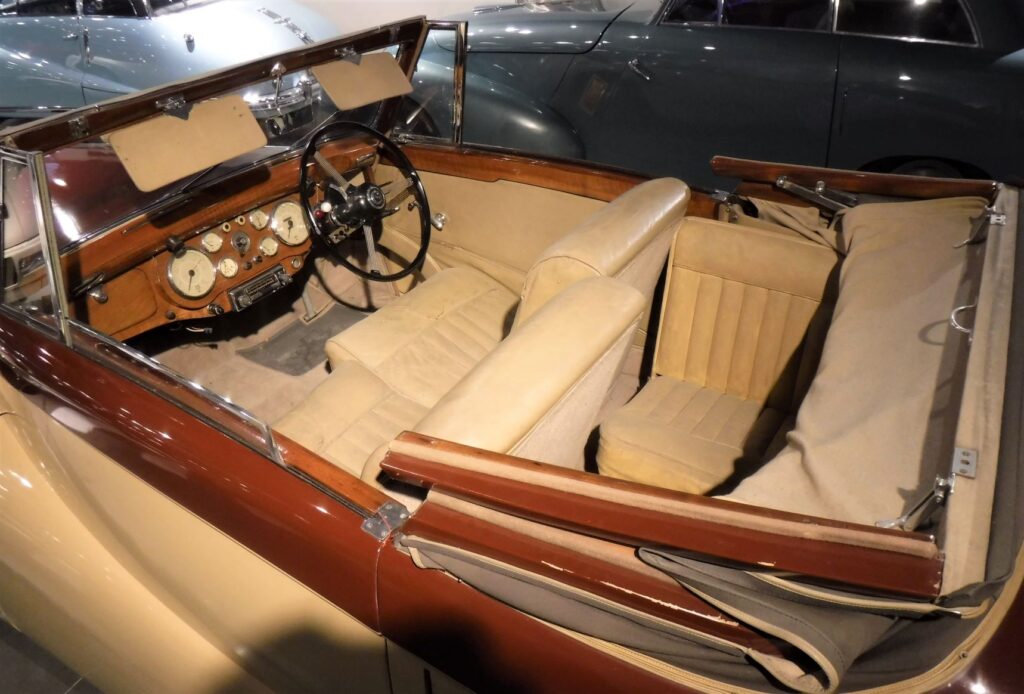
The engineers solved this problem by installing a sideways-facing seat behind the driver, thus ensuring the long-suffering mother-in-law could still still come along for the ride.
The Italian designed, BMW built Isetta is probably the world’s first mass produced micro-car. The three-wheeled version, displayed at the Museum, was not surprisngly prone to rollovers. Perhaps that’s why the designers employed an egg-shaped body, hoping that if an Isetta capsized it would roll back onto its wheels again.
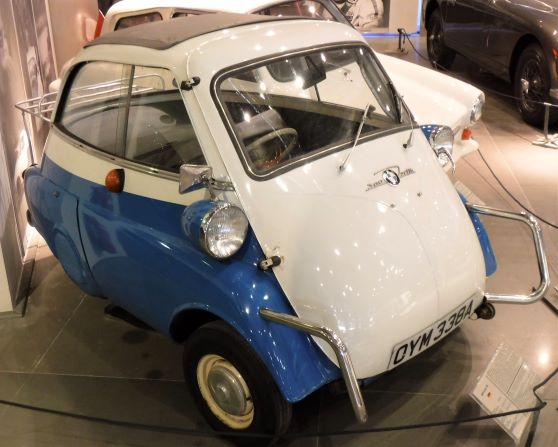
The Hellenic Motor Museum contains a Greek designed and built car, the 1980 Tzen Tonaco. Unfortunately the Tonaco looks shithouse and performs similarly.
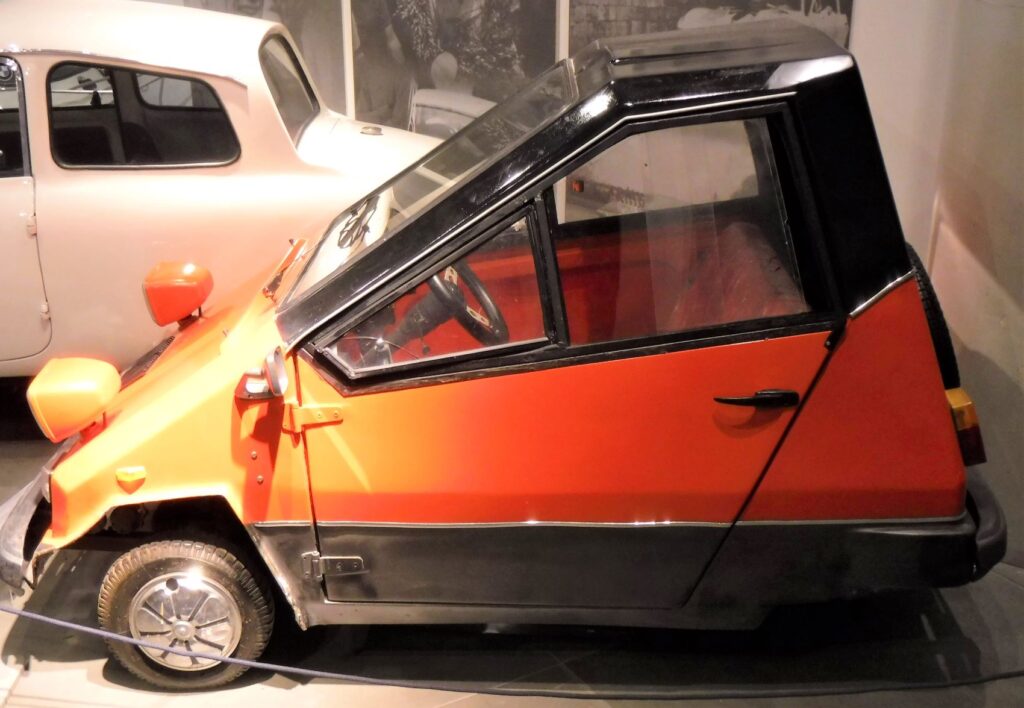
The information panel explains ‘…a version fitted with an electric motor and six batteries…having a range of about 40km is under construction’. Who’s going to be the one to tell them that electric car technology is a little more advanced these days?
Theo has bought up some smart looking Maseratis over the years, including this ’66 Sebring. It’s good for 235 km/h, which will lose you your licence pretty much anywhere in the world.
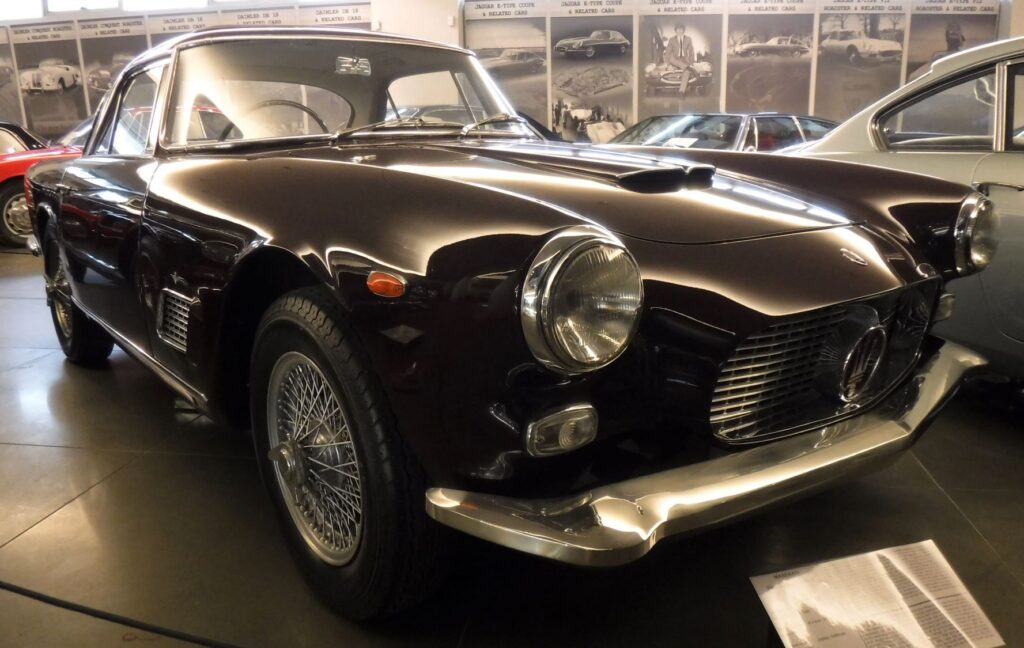
The bottom level of the Hellenic Motor Museum is dedicated to the big reds, including Ferraris and Dinos. That’s some heavy horsepower right there, sports fans.

I had a great time exploring the The Hellenic Motor Museum. It’s a real gem of automobile history hidden amongst Athens’ ancient sites. If you’re in Athens, take time out from the classical architecture to check out some vintage, veteran and classic cars too.
Visit the Hellenic Motor Museum site here
If you liked this post, you may also enjoy The Royal Automobile Museum, Jordan , Malta Classic Car Museum
Leave a Reply